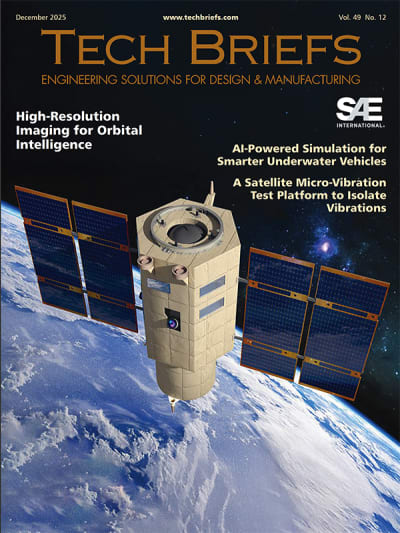Wireless Sensor Network Handles Image Data
Vexcel Corporation, of Boulder, Colorado, received Small Business Technology Transfer (STTR) funding through Goddard to develop the wireless sensor network technology that now aids in the high-speed handling of image data. This technology has uses in both the commercial sector, where it is used to relay satellite imagery to the desktop, and in the government sector, where NASA is finding continued use in terrestrial and interplanetary studies.
Transcript
00:00:02 often the best way to truly see a place is from a bird's eye view but you don't have to be a bird to have that view a small company in Boulder Colorado develops the technology to get those views with the help of satellites vexel Corporation now a wholly owned subsidiary of Microsoft has a long history of working with government Partners including NASA through the
00:00:25 small business Innovation research and small business technology transfer programs or sbir and sttr with sbir funds from NASA's jet propulsion laboratory and other Federal Partners vexel developed a tool called photo G photo G was used to take digital photos and create very accurate 3D models of buildings and other objects and it plays a role in shuttle
00:00:51 maintenance and vibration analysis of space station power panels over a number of years uh and through these various SBI as the capability of photo G continued to improve in in its use and its ability to uh perform very accurate inspections like we're doing with the shuttle the National geospatial Intelligence Agency awarded vexel an sbir contract to process data from
00:01:17 NASA's shuttle radar topography Mission or srtm srtm collected data of the earth's land surfaces creating the first ever near global data set of land elevations working with stennis Space Center vexel developed two different Innovations an interferometric synthetic aperture radar processing system or insar that combined various satellite images to provide
00:01:43 highresolution topography maps and an apex ground station to receive and process geographical data and images from various satellites the software and ground station are now commercially available products one of the ground stations installed by The Firm reports the center for Southeast tropical Advanced remote sensing known as sea stars at the University of Miami sea
00:02:07 stars receives and processes realtime Earth monitoring data from orbiting satellites such as the areas affected by Hurricane Katrina they could deliver uh knowledge of what's going on down there uh early on while the area was still Cloud Mast and then later they use the electrooptical sensors to provide even more information through St funds from Goddard space flight center vexel and
00:02:34 Penn State University created an autonomous wireless network the idea was to be able to have these Wireless nodes we could deploy those in in Greenland Antarctica uh Alaska and we can monitor the Ice Flow and conditions in those areas without having scientists on you know on the ice part of a NASA funded program called sea monster the network monitors phenomena associated with
00:03:01 glaciers weather and water in remote areas of Southeast Alaska the Technologies vexel developed over the years with NASA have enhanced Microsoft's virtual Earth capabilities the digital elevation models are absolutely key to the virtual Earth uh delivery of a a very accurate highresolution 3D City models ultimately around the world in
00:03:26 turn vexel brings new knowledge into its NASA projects we Leverage The Technologies coming out of Microsoft research and out of the out of the product team technology groups we leverage that to solve government geospatial problems Beyond a bird's eye view of our own world we'll eventually need one for other worlds and vexel is working on two NASA missions that will
00:03:52 map the lunar surfaces

